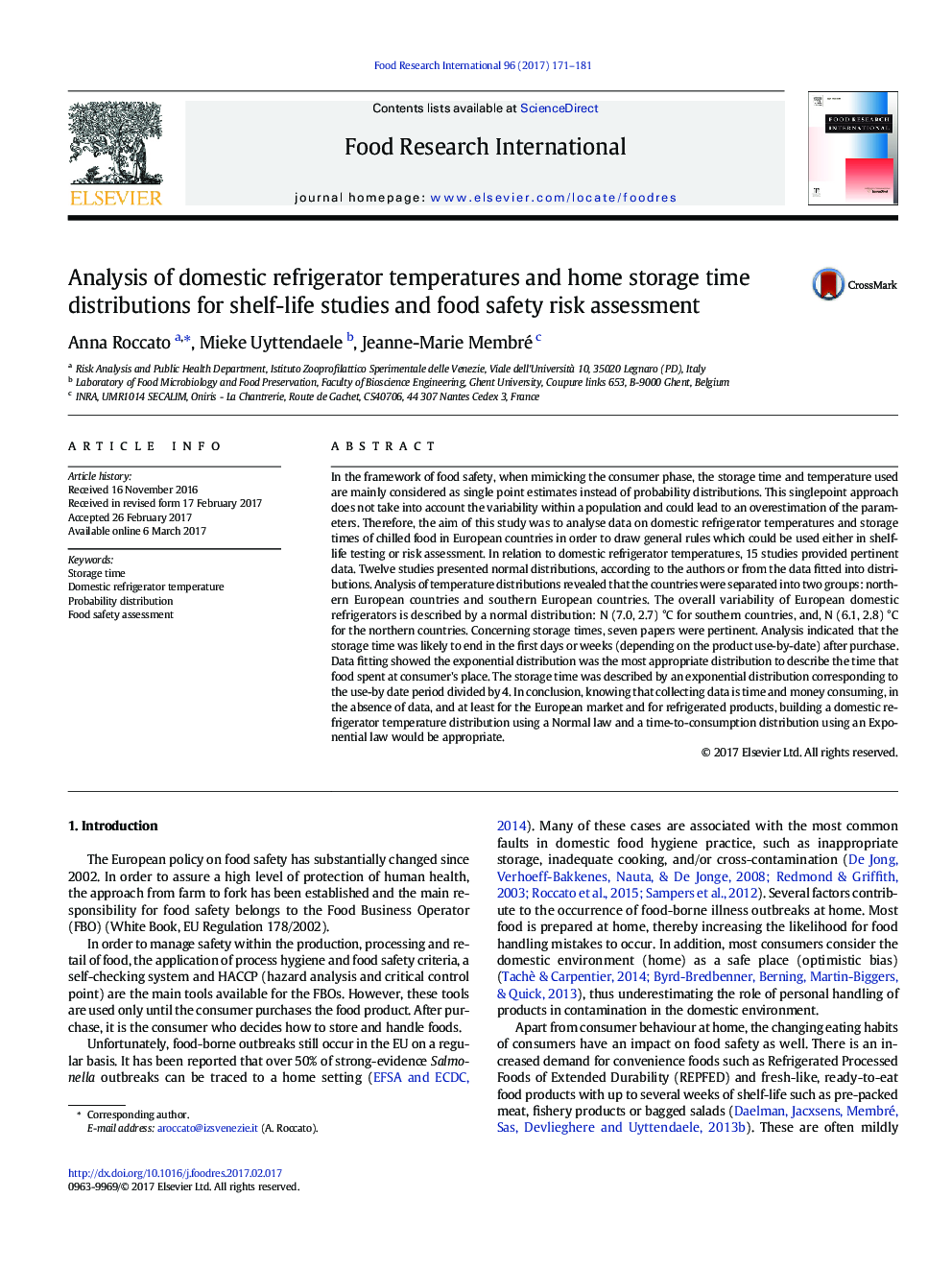| کد مقاله | کد نشریه | سال انتشار | مقاله انگلیسی | نسخه تمام متن |
|---|---|---|---|---|
| 5768265 | 1628454 | 2017 | 11 صفحه PDF | دانلود رایگان |
- Consumer level storage times/temperatures have to be included in risk assessments
- Single-point estimates do not adequately describe real-life situations
- In the absence of data, simple rules could be appropriate for the European market
- A normal law can describe domestic refrigerator temperature distribution
- An exponential law can describe the storage time distribution
In the framework of food safety, when mimicking the consumer phase, the storage time and temperature used are mainly considered as single point estimates instead of probability distributions. This singlepoint approach does not take into account the variability within a population and could lead to an overestimation of the parameters. Therefore, the aim of this study was to analyse data on domestic refrigerator temperatures and storage times of chilled food in European countries in order to draw general rules which could be used either in shelf-life testing or risk assessment. In relation to domestic refrigerator temperatures, 15 studies provided pertinent data. Twelve studies presented normal distributions, according to the authors or from the data fitted into distributions. Analysis of temperature distributions revealed that the countries were separated into two groups: northern European countries and southern European countries. The overall variability of European domestic refrigerators is described by a normal distribution: N (7.0, 2.7) °C for southern countries, and, N (6.1, 2.8) °C for the northern countries. Concerning storage times, seven papers were pertinent. Analysis indicated that the storage time was likely to end in the first days or weeks (depending on the product use-by-date) after purchase. Data fitting showed the exponential distribution was the most appropriate distribution to describe the time that food spent at consumer's place. The storage time was described by an exponential distribution corresponding to the use-by date period divided by 4. In conclusion, knowing that collecting data is time and money consuming, in the absence of data, and at least for the European market and for refrigerated products, building a domestic refrigerator temperature distribution using a Normal law and a time-to-consumption distribution using an Exponential law would be appropriate.
293
Journal: Food Research International - Volume 96, June 2017, Pages 171-181
